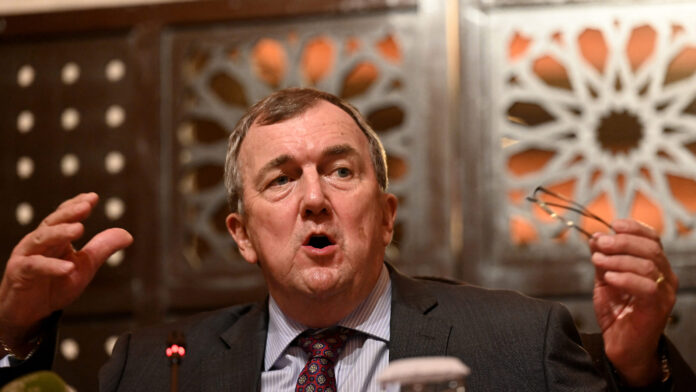
THE shutdown of Loulo-Gounkoto in Mali was weighed heavily on Barrick Mining Corp.’s first quarter with its CEO Mark Bristow saying he’d prefer a negotiated settlement with the West African country’s junta rather than “a badly run legal fight”.
The Canadian miner wrote down the asset for $484m, although this hit to earnings was offset by impairment reversals at the Zambia copper mine Lumwana ($655m) and at Veladero ($437m), a gold mine in Argentina.
Loulo-Gounkoto was suspended in January after the government seized around three tons of gold stock from it, accusing the company of not fulfilling its tax obligations. Barrick previously adjusted its full year production guidance to account for the mine’s suspension.
Bristow said on Wednesday arbitration proceedings under World Bank guidelines would commence in a process in which Mali’s military junta was participating. But he expressed his preference for a deal. “I had this conversation with a member of the junta just over a year ago, and he agreed that it’s always better to have a negotiated settlement than a badly run legal fight.
“I’d like to believe that [could happen]. What I can tell you is we’re still very much engaged.”
Bristow added Mali was being poorly advised, a dynamic in the dispute that was contributing towards the impasse. The government had three times agreed to a resolution before rowing back, he said.
“It is more challenging in Mali because you’re dealing with a forced change,” he said, referring to the coup d’état in 2021. “And one of the big challenges is the lack of professional advice on the Mali side, which would help a lot if we could sit around a table in really unpack the numbers.”
Since suspending the mine, Mali’s tax authority has shut Barrick’s local offices and raised the prospect of appointing a judicial administrator in the event operations are not resumed.
However, Barrick had no plans to put Loulo-Gounkoto on care and maintenance, unless forced, said Bristow. In the event, care and maintenance costs would be less than $10m, he added.
The group reported today 35 US cents/share in adjusted net earnings, 24% lower than in the previous quarter but 84% lower year-on-year. Quarterly net earnings came in six US cents above Bloomberg consensus.
Barrick’s numbers were driven by record gold prices during the period. Barrick realised an average price of $2,898 per ounce after selling 751,000 oz during the period – 22% less than in the fourth quarter – partly a reflection of Loulo-Gounkoto.
Loulo-Gounkoto’s suspension also contributed to above inflation cost increases. On a cost of sales basis, Barrick reported a 14% increase over the fourth quarter to $1,629/oz. All in sustaining costs increased 22% quarter-on-quarter to $1,775/oz (20% higher year-on-year).
Barrick has guided to 2025 production of 3.15 to 3.5 million oz for this year at an AISC of $1,460 to $1,560/oz. Attributable copper production for 2025 is projected to increase from 195,000 tons in 2024 to 200,000–230,000 tons, driven by increased production at Lumwana.
Barrick forecast higher gold output at its Pueblo Viejo, Turquoise Ridge, Porgera and Kibali mines while Veladero and Phoenix would report lower output year-on-year.
In April, Barrick announced the $1bn sale of its Donlin mine in Alaska. Commenting in a presentation today, Bristow said this was the first of the group’s planned rationalisation of the portfolio so to focus on its tier one assets. The Tongon mine in Côte d’Ivoire was “far down” this process, sasid Bristow.









